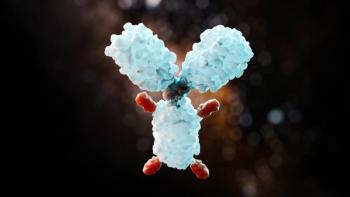
Plasma Exchange Pretreatment Using Intravenous Immunoglobulin May Reduce Pathogenic Autoantibodies Associated With Pulmonary Vasculitis
Intravenous immunoglobulin independently contributed to the reduction of pathogenic autoantibody levels associated with vasculitis in patients with severe kidney injury, a new study shows.
Investigators just released the first report that highlights the effects of administering high-dose intravenous immunoglobulin (IVIG) prior to plasma exchange (PEX) for the treatment of severe pulmonary renal syndrome caused by anti-neutrophil cytoplasmic autoantibody (ANCA)-associated vasculitis (AAV).
“(PEX) rapidly depletes pathogenic ANCA autoantibodies and is considered for induction therapy in severe AAV,” the study authors wrote. “This is particularly important in patients presenting with severe diffuse pulmonary hemorrhage (DAH) that is immediately life threatening, where rapid ANCA clearance might make a ‘life or death’ difference.”
The researchers found that IVIG was a well-tolerated agent that can be used with PEX to improve the efficacy of MPO-ANCA autoantibody removal.
“After high-dose application of intravenous immunoglobulins (IVIGs) prior to plasma exchange treatment, efficacy of myeloperoxidase (MPO)-ANCA autoantibody elimination was substantially increased,” the investigators wrote in the study, which was published in Frontline Immunology.
Investigators assessed the efficacy of PEX with IVIGs pretreatment for AAV, using a case study of a woman, aged 75 years, with life threatening pulmonary renal syndrome to demonstrate their findings. The patient was originally hospitalized with arthralgia and developed acute hemoptysis.
Once moved to a different site, she presented signs of lung failure, acute kidney injury, albuminuria, hematuria, severe diffuse pulmonary hemorrhage (DAH), and high levels of MPO-ANCA autoantibodies.
The patient was treated with a regimen of:
- 10 mg/kg bodyweight of intravenous cyclophosphamide (an immunosuppressive).
- Multiple PEX treatments—including Plasauto ∑ (Asahi Kasei Medical Co., Ltd) and Plasmaflo OP-08W(L) filter (Asahi Kasei Medical Co., Ltd)— administered on alternating days.
- Low-dose unfractionated heparin (during PEX treatment).
- 2 mg of antihistamine clemastine (Tavist Allergy, Novartis Consumer Health, Inc) followed by IVIGs of 1 g/kg body weight (Kiovig 10g/100mL, Takeda Manufacturing Austria AG), which were administered 2 hours prior to the patient’s later PEX treatments.
PEX is an induction therapy for severe AAV because it can quickly eliminate pathogenic ANCA autoantibodies, which is the goal of current treatments for severe AAV. Although PEX may not have significant survival benefits, it can reduce acute mortality, especially in patients with severe DAH, so it is also recommended as an adjunctive therapy.
Like PEX, high-dose IVIG treatment can remove circulating ANCA autoantibodies in patients with AAV. Following IVIG infusion, the patient had a 36% reduction in MPO-ANCA autoantibody levels. IVIG was well tolerated, did not exacerbate kidney damage, and it helped to remove the patient’s hemorrhage, according to the study. The authors noted that IVIG infused before PEX did not improve the efficacy of PEX, rather it decreased ANCA autoantibody levels on their own.
The authors said the findings are limited by sample size and require additional research with a larger population. In addition, more research should be conducted that evaluates IVIG pretreatment time, ANCA autoantibody subtypes, and more specific mechanisms of action, according to the investigators.
“We are aware that our observations require validation in larger study populations, that kinetics may have also been affected by previous induction therapy, pretreatment time of IVIGs or ANCA autoantibody subtypes, and that the exact mechanisms contributing to our observations require further investigation,” the researchers wrote. “Furthermore, the immunoassay results were not reliable as values were outside of the manufacturer’s reference range. Nevertheless, this ANCA level-driven approach might contribute to novel therapeutical strategies to increase efficacy of pathogenic ANCA autoantibody clearance in severe AAV.”
Reference
Schäfer, A, Dierks S, Schnelle M, et al. Case Report: High-dose immunoglobulins prior to plasma exchange in severe pulmonary renal syndrome. Front Immunol. 2023; 14: 1210321. June 2023. doi: 10.3389/fimmu.2023.1210321
Newsletter
Stay informed on drug updates, treatment guidelines, and pharmacy practice trends—subscribe to Pharmacy Times for weekly clinical insights.
















































































































































































































